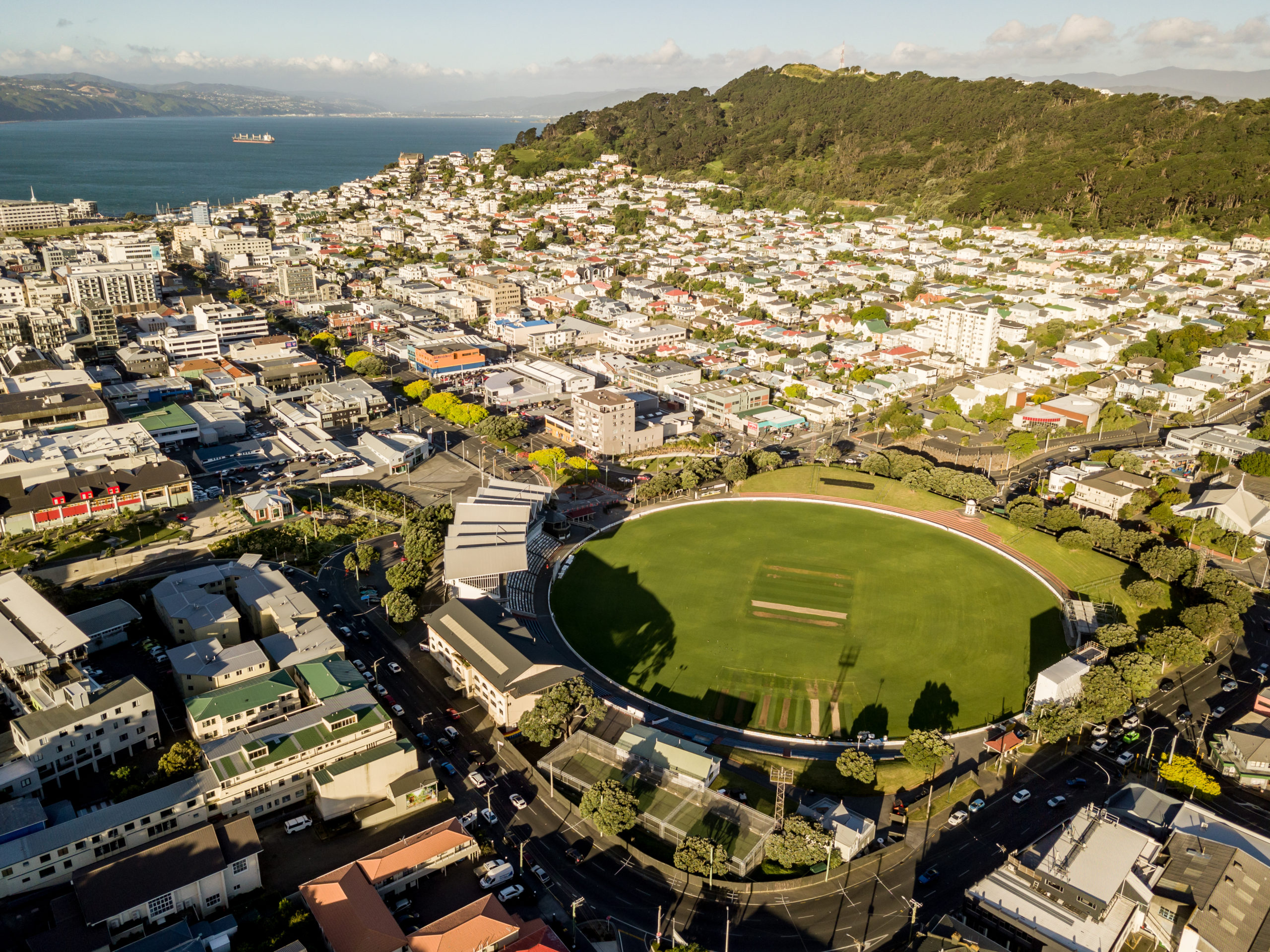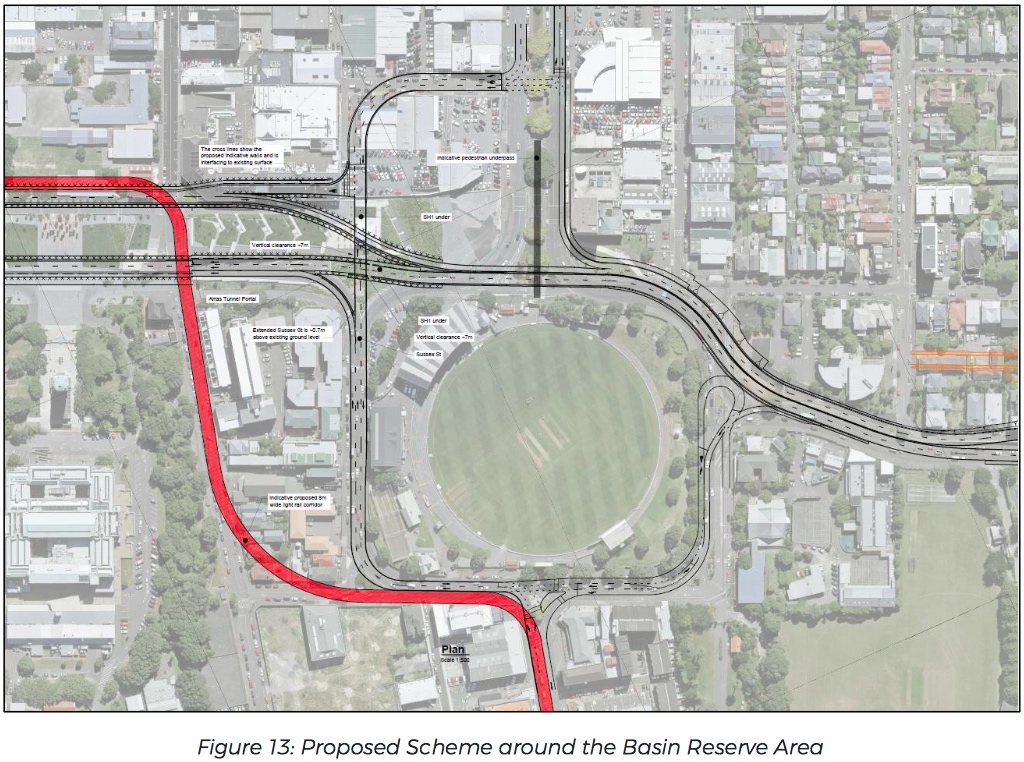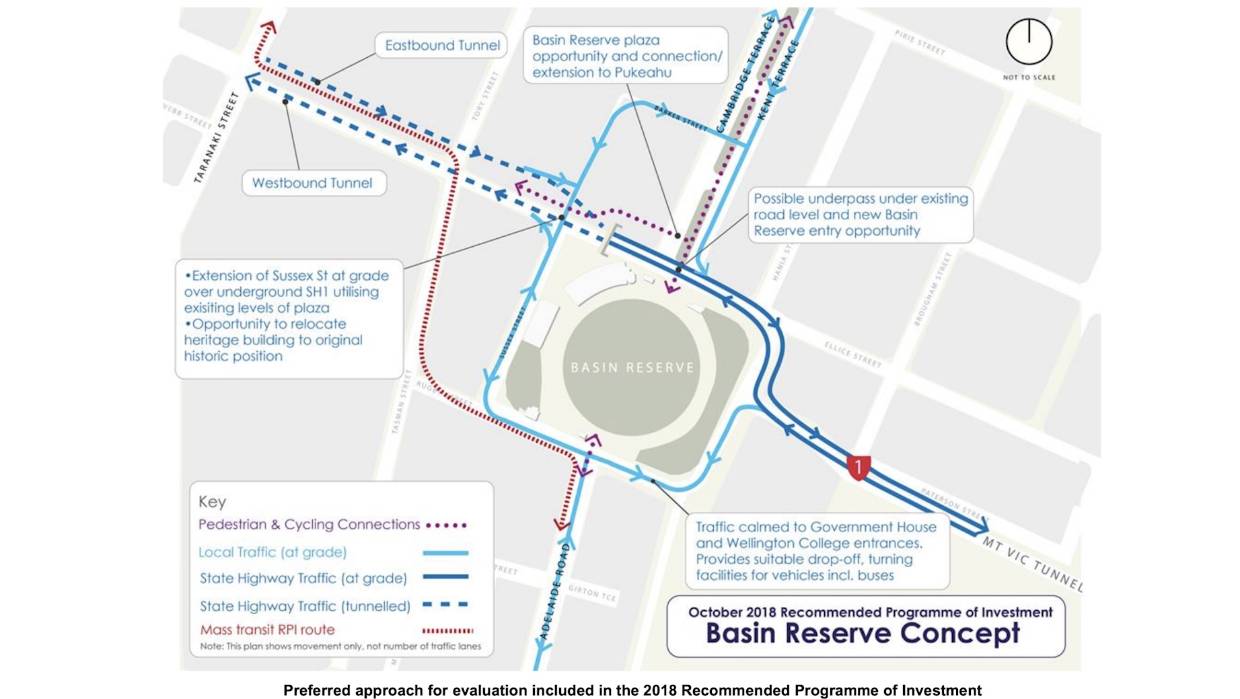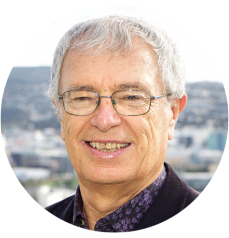Let’s Get Wellington Moving: time to give your views on four mass transit and State Highway 1 options that affect the Basin Reserve precinct

Six years after the Basin Reserve flyover proposal was finally defeated in the High Court, Let’s Get Wellington Moving has announced four options for mass rapid transit and State Highway One changes in Wellington. Based on the information that’s been released including the detailed documents, none of the options that have been presented threaten the future of the Basin Reserve itself. However, Options 1-3 would represent major changes to the area around the Basin.
We’ve evaluated the four options against our 2019 position statement and in the light of written answers LGWM provided to our questions as well as LGWM’s FAQs.
We’ve decided not to recommend a specific option, but outline factors that we believe you should take into account when considering the four options. When making your submission, you don’t have to back a specific option – instead, you can say what you do and don’t like about each option, or whether you have a different proposal.
LGWM will be releasing a preferred option in 2022. It may be a combination of features from these four options.
If you already know what you want to say, make your submission by Friday 10 December. (Note: You have to skip through a few screens to reach the point you can start submitting.)
The four options in brief
Option 1: Light rail to Island Bay running along Cambridge Tce, Sussex St and Adelaide Rd, plus a new diagonal bus tunnel through the Mt Victoria ridge, south of the present tunnel. Existing Mt Victoria tunnel repurposed for walking and cycling. Hataitai Bus Tunnel still used for local buses. Cost: $7.4 billion
Option 2: Bus rapid transit to Island Bay running along Cambridge Tce, Sussex St and Adelaide Rd, plus a new diagonal bus rapid transit tunnel through the Mt Victoria ridge, south of the present tunnel. Existing Mt Victoria tunnel repurposed for walking and cycling. Hataitai Bus Tunnel still used for local buses. Cost: $7.0 billion.
Option 3: Light rail to Island Bay running along Cambridge Tce, Sussex St and Adelaide Rd. Buses continuing to use the Hataitai Bus Tunnel and private cars to use the existing Mt Victoria Tunnel. A new walking and cycling tunnel to be built to the immediate north of the existing Mt Victoria Tunnel. Cost: $6.6 billion
Option 4: Light rail to Island Bay running along Taranaki St, then joining Adelaide Rd via Rugby St. Buses continuing to use the Hataitai Bus Tunnel and private cars to use the existing Mt Victoria Tunnel. A new walking and cycling tunnel to be built to the immediate north of the existing Mt Victoria Tunnel. Cost: $5.8 billion
Implications for the Basin Reserve and immediate environment
Option 1-3 would make substantial at-grade changes to the Basin Reserve precinct. Mass transit would go past the Basin on the Sussex St side, and Sussex St would pass over an extended Arras Tunnel. LGWM’s concept art (see p. 27) shows what they think this would look like at the Cambridge Tce end of the Basin, but we don’t yet have detailed designs.
Option 4 would result in only minor changes to the Basin Reserve precinct, mainly to improve access to the proposed new walking and cycling tunnel.
Read more about the proposals for the Basin Reserve
Implications for the wider area around the Basin
Options 1-2 include provision for a new public transport tunnel between the vicinity of St Mark’s School diagonally through the Mt Victoria / Matairangi ridge to the vicinity of the Wellington Rd-Ruahine St corner – in Option 1, it’s for regular buses, and in Option 2, it’s for bus rapid transit (i.e. high-capacity buses running on dedicated busways). This diagonal tunnel would be much longer than the present Mt Victoria tunnel.
The walkable catchment for mass rapid transit, which is expected to be the area of greatest housing intensification, covers more of Te Aro and less of Mt Victoria in Option 4, compared to Options 1-3.
One of STB’s criteria for these LGWM proposals is that they should not add any additional capacity for private cars. While this is true of all the options as they stand, Options 1 and 2 do add additional road capacity for public transport, so it is possible that a future Government with different transport priorities could choose to repurpose those public transport tunnels for cars. We understand that this possibility has been raised during the options development project.
What about the Eastern Suburbs?
There appears to have been a major shift in LGWM’s thinking in 2019. At that time, they were planning for the mass transit route to go from the CBD via Taranaki St to Newtown, past the hospital and the zoo, and then out to the Eastern Suburbs via a tunnel under Mt Alfred.
Now, the proposed main mass transit route runs to Island Bay. LGWM have said that this change has been made firstly because mass transit enables housing intensification, and secondly because the eastern suburbs are especially vulnerable to a range of hazards, including sea level rise and liquefaction, meaning that they’re not a good place to intensify housing. However, Option 2 includes more intensification in the eastern suburbs and less in the southern suburbs.
Which option is best for the climate?
Option 4 is a clear winner when it comes to lifetime greenhouse gas emission reductions, as this article explains. LGWM’s initial “leaf” ratings for climate impact were misleading and soon withdrawn.
Read LGWM’s detailed climate analysis of the options.
That said, none of the options reduce emissions as quickly as is needed to meet Wellington City Council’s Te Atakura emissions reduction plan.
Which option is most affordable?
Option 4 is the cheapest option, but LGWM has assured us that all options are achievable within LGWM’s funding envelope. Bear in mind that 60% of the funding for LGWM projects comes from the Government, and 20% each from Wellington City Council and Greater Wellington.
Read LGWM’s detailed analysis of project costings.
Other issues to consider
This submission guide focuses on the matters of most importance to the Save the Basin Campaign. But these are big, complex proposals. We encourage you to check out submission guides from other groups (such as this guide from Talk Wellington) and think about what options are best for you, your community and the future of our city.
Make your submission by Friday 10 December!


